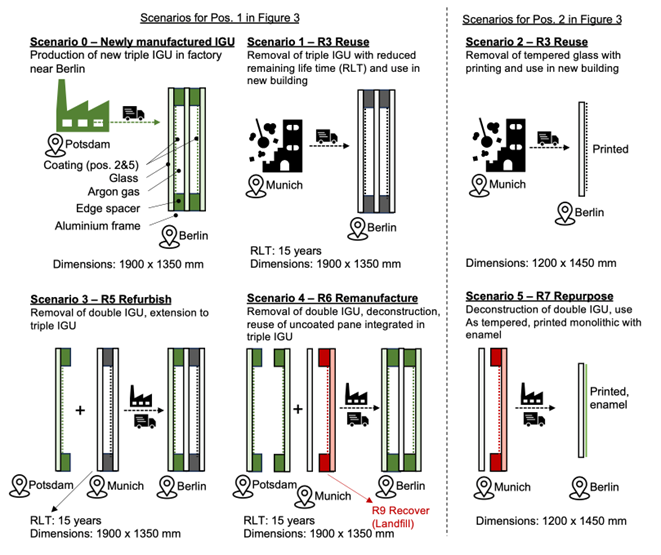Case Study on the Re-use Potential of Insulated Glass Units
DOI:
https://doi.org/10.47982/cgc.9.638Downloads

Abstract
Glass is an energy intensive material that is essential to buildings and their energy consumption. Its transparency allows for natural daylighting and the use of solar heat gains. In the context of the refurbishment politics of the EU as a result of the Paris Agreement on climate goals, significant amounts of glass waste in form of windows and façades are to be expected. In order to minimize the environmental impact of glass by preserving the embodied carbon and substitute newly produced glasses, the Re-use of glass is considered to be of highest potential. When reusing panes, energy and raw material can be saved that otherwise would be consumed for the production of new glass. This way, the common principles of sustainability - sufficiency, efficiency and consistency - can be realized for the life cycle of flat building glass. The following case study estimates the potential of different scenarios for circular waste treatment of glass panes by applying the 9R Framework to insulating glass units (IGUs). The scenarios are defined and presented. A life cycle assessment (LCA) using identical system boundaries for these scenarios was executed and the results are compared to producing IGUs entirely with new glass. Finally, the feasibility of the strategies is evaluated and recommendations for the processing of glass in stock are derived.
Published
Issue
Section
Circularity & Sustainable Solutions
License
Copyright (c) 2024 Kathrin Rauh, Marcel Reshamvala, Philipp Kießlich , Isabell Ayvaz, Julian Länge, Michael Elstner , Daniel Pfanner, Miriam Schuster

This work is licensed under a Creative Commons Attribution 4.0 International License.



